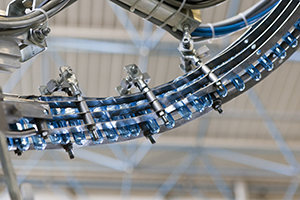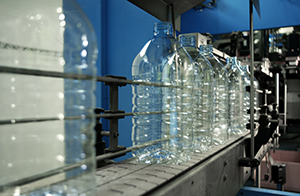Using the right equipment is a critical aspect of creating effective and efficient metal fabrication assemblies. When you need to transform metal sheets into specific shapes, your production line may rely on stamping dies to do the job. These are precision tools used for cutting and forming sheet metal. They come in a few varieties, and they perform an array of functions. Noble Precision has the means to employ the proper application for the job at hand.
Metal Stamping Dies Technology
Here are the basic types of dies used for stamping in metal fabrication:
- Progressive: These are utilized for high-volume production, and they are generally appropriate for high-speed operations. They offer an economical and efficient method of getting parts into production.
- Transfer: This type is also used for high-volume manufacturing. Transfer dies are ideal when the parts are medium to large in size, as well as round in shape and deep-drawn.
- Line: Line dies actually come in two types: manually loaded and robotically loaded. They work well for low-volume production, as well as for large parts that cannot be produced efficiently in one press.
Uses for Metal Stamping Dies
Cutting is the most common use for which metal stamping dies are needed. The metal is placed between two sections, and the degree of cutting clearance will depend on the particular operation.
The ways that the tools might be used to cut metal are as follows:
- Shearing – The metal is sliced in a straight line. Shearing is ideal for blanks that are square or rectangular in shape.
- Trimming – Flat sheet metal is cut at its outer perimeter. Pieces might be trimmed to achieve various desired shapes.
- Notching – Cutting is performed progressively on the exterior section of a metal strip. This serves to create the strip profile necessary for a given project.
- Lancing – Metal is sliced in order to move it without removing it from the strip. This function is typically applied when producing a certain kind of part carrier, known as a flex or stretch web.
- Piercing – This technique is also referred to as perforating, and it involves cutting sheet metal to create a hole in it. The metal slug created from the perforation is discarded as scrap.
- Blanking – Often implemented on a large scale, this cutting process serves two purposes. First, the slug may be retained for further press-working. Blanking may also be performed to cut finished pieces from the sheet metal. When slugs are created during this kind of operation, they are shaped, and they are referred to as blanks. The blanks may subsequently be cut or formed for a different use.
Processes and Technologies Offered by Noble Precision
Regardless of what your manufacturing requirements might be, we are proud to provide you with the right technology to increase your capabilities. Our technicians can assist you in exploring which metal stamping dies might best serve your production process.
Curious about metal stamping dies technology? Noble Precision can help you find the best solutions. Give us a call at 416-938-6455 or contact us online for more information.

 In the most basic of terms, blow molding is a process used in the manufacturing of hollow plastic parts. This production method is a successor, in a manner of speaking, to the art of glassblowing, and it has permitted the replacement of heavier and/or breakable glass parts with lighter and more durable items or components.
In the most basic of terms, blow molding is a process used in the manufacturing of hollow plastic parts. This production method is a successor, in a manner of speaking, to the art of glassblowing, and it has permitted the replacement of heavier and/or breakable glass parts with lighter and more durable items or components. Noble Precision has the capacity to design/produce precise blow molds for the production of parts/components in a wide variety of shapes and sizes. This expertise is reinforced by Noble Precision’s considerable financial investments in state-of-the-art technology, notably the latest in 5-axis simultaneous CNC machines and CAD/CAM software; this commitment allows their clients to benefit from the most advanced and accurate machining methodology.
Noble Precision has the capacity to design/produce precise blow molds for the production of parts/components in a wide variety of shapes and sizes. This expertise is reinforced by Noble Precision’s considerable financial investments in state-of-the-art technology, notably the latest in 5-axis simultaneous CNC machines and CAD/CAM software; this commitment allows their clients to benefit from the most advanced and accurate machining methodology.